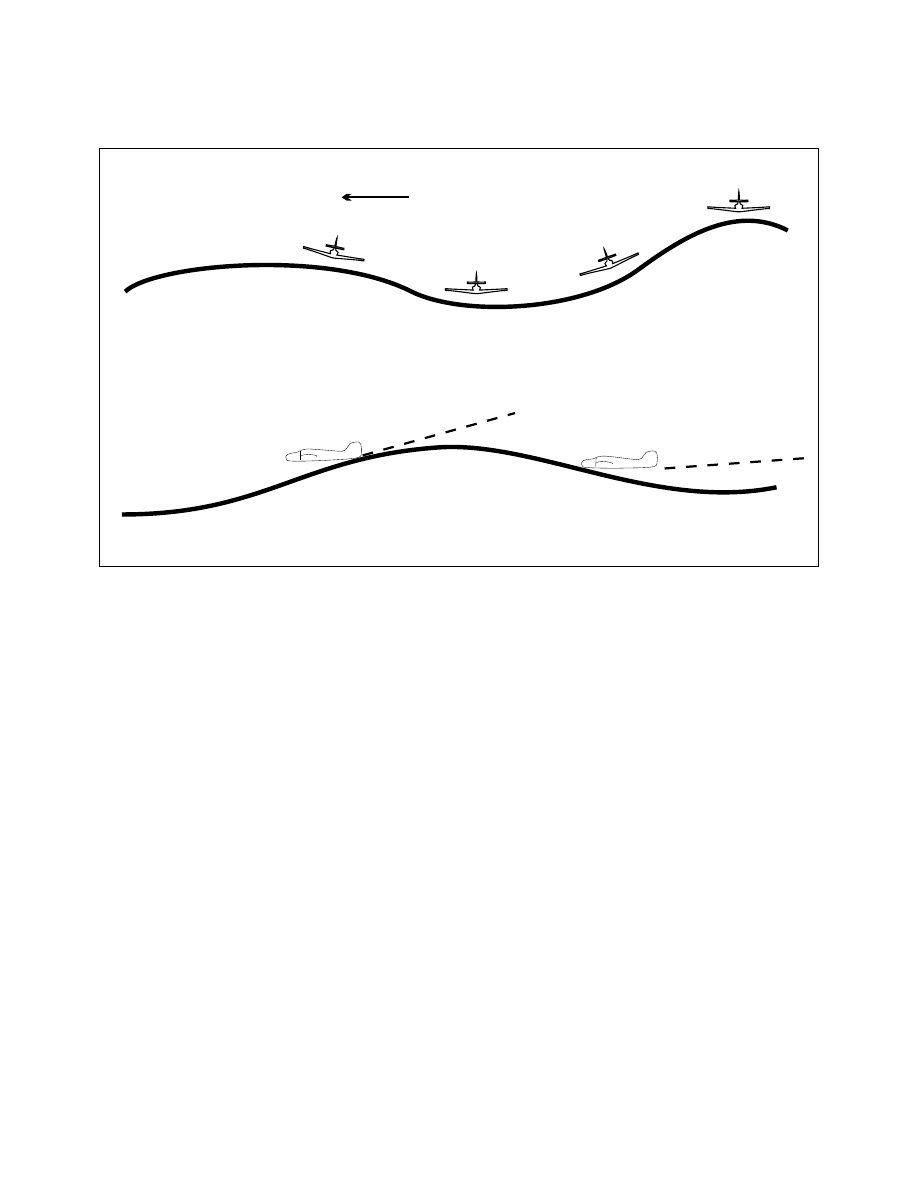
AIM
4/20/23
6
−
3
−
5
Distress and Urgency Procedures
FIG 6
−
3
−
5
Wind
−
Swell
−
Ditch Heading
GOOD
GOOD !!
BACK SIDE
POOR!!!
FACE
GOOD
FAIR
BEST
BEST
DIRECTION OF
SWELL MOVEMENT
Landing parallel to the major swell
Landing on the face and back of swell
a.
A successful aircraft ditching is dependent on three primary factors. In order of importance they are:
1. Sea conditions and wind.
2. Type of aircraft.
3. Skill and technique of pilot.
b. Common oceanographic terminology.
1. Sea.
The condition of the surface that is the result of both waves and swells.
2. Wave
(or Chop). The condition of the surface caused by the local winds.
3. Swell.
The condition of the surface which has been caused by a distance disturbance.
4. Swell Face.
The side of the swell toward the observer. The backside is the side away from the observer.
These definitions apply regardless of the direction of swell movement.
5. Primary Swell.
The swell system having the greatest height from trough to crest.
6. Secondary Swells.
Those swell systems of less height than the primary swell.
7. Fetch.
The distance the waves have been driven by a wind blowing in a constant direction, without
obstruction.
8. Swell Period.
The time interval between the passage of two successive crests at the same spot in the
water, measured in seconds.
9. Swell Velocity.
The speed and direction of the swell with relation to a fixed reference point, measured
in knots. There is little movement of water in the horizontal direction. Swells move primarily in a vertical motion,
similar to the motion observed when shaking out a carpet.
10. Swell Direction.
The direction
from
which a swell is moving. This direction is not necessarily the result
of the wind present at the scene. The swell may be moving into or across the local wind. Swells, once set in